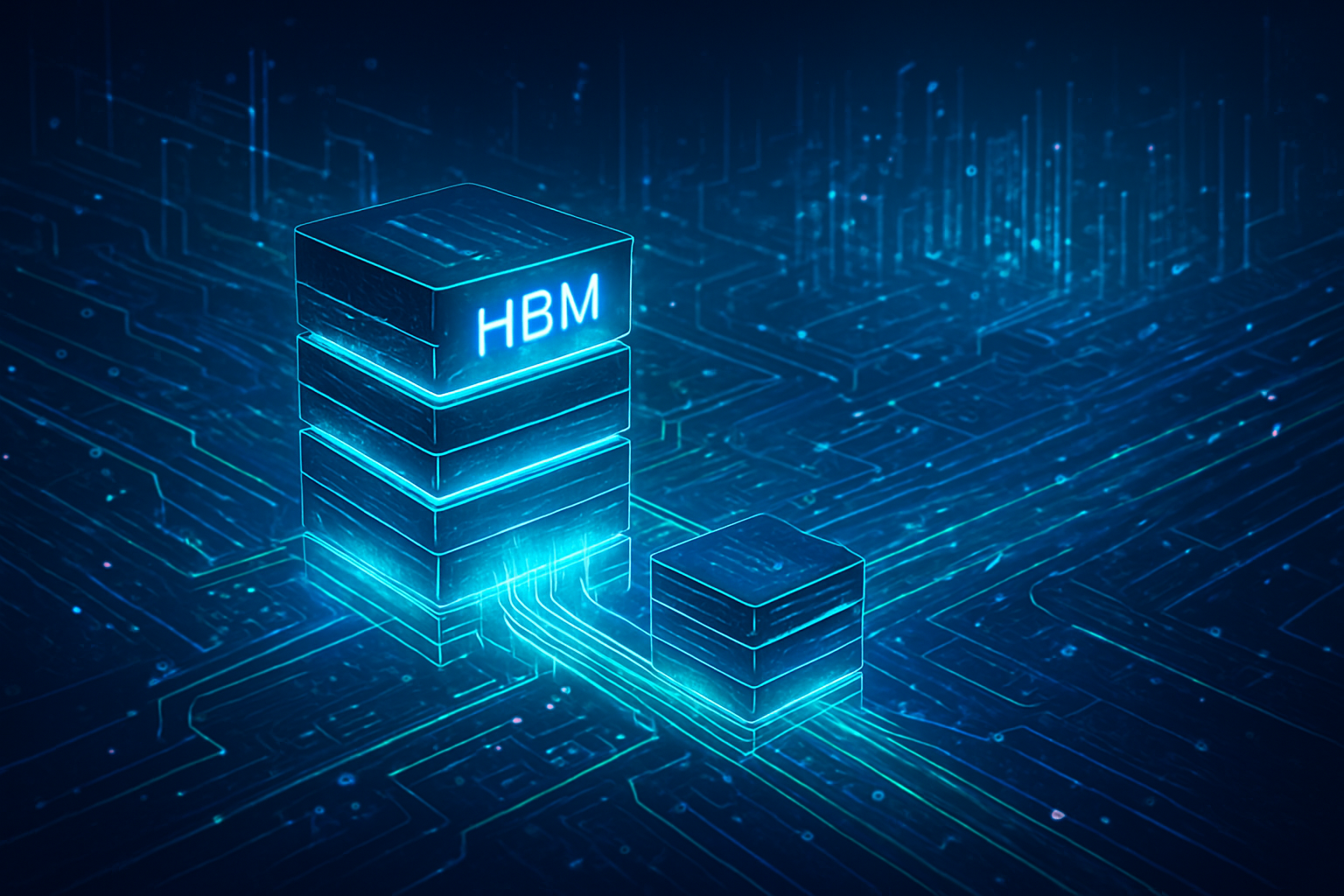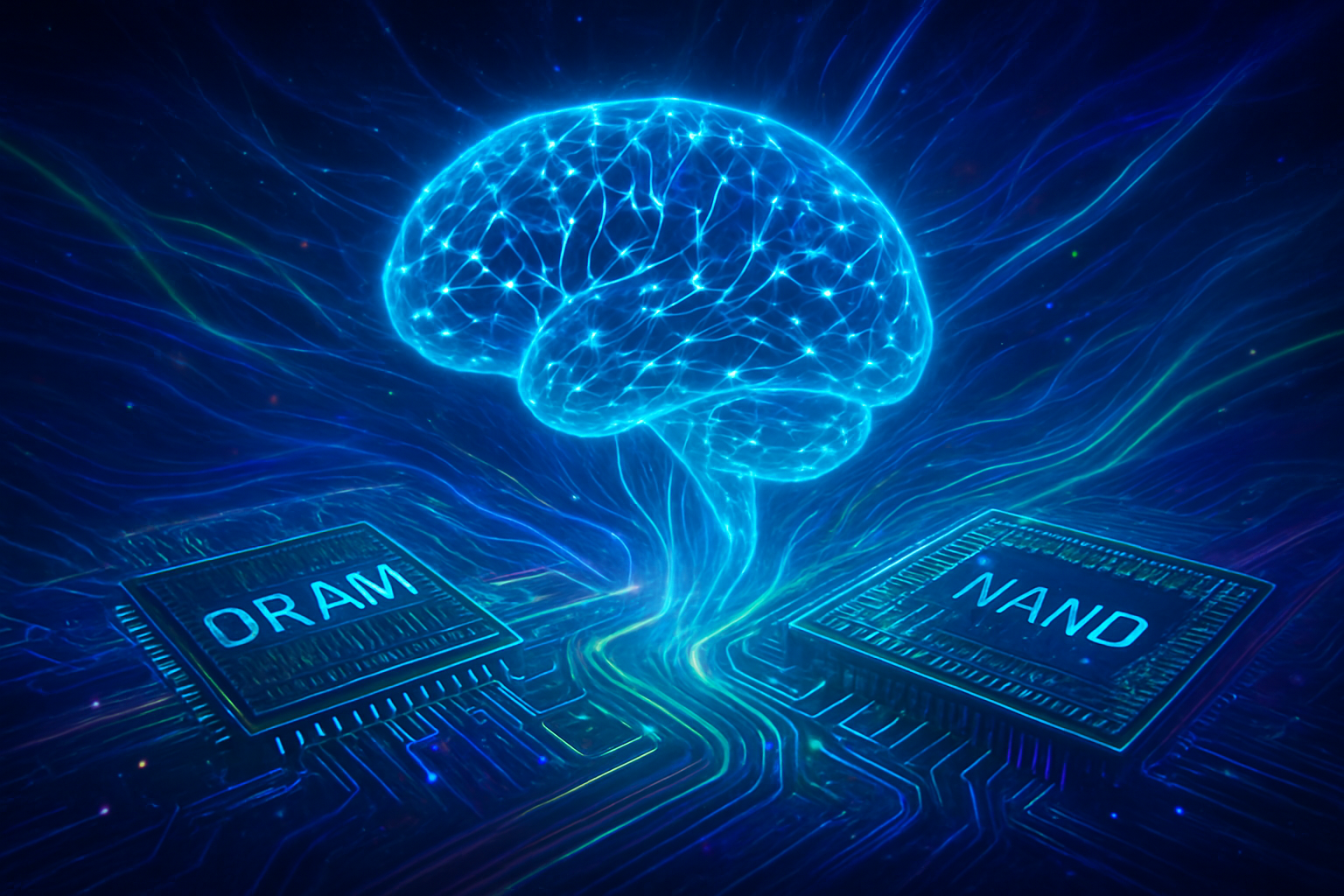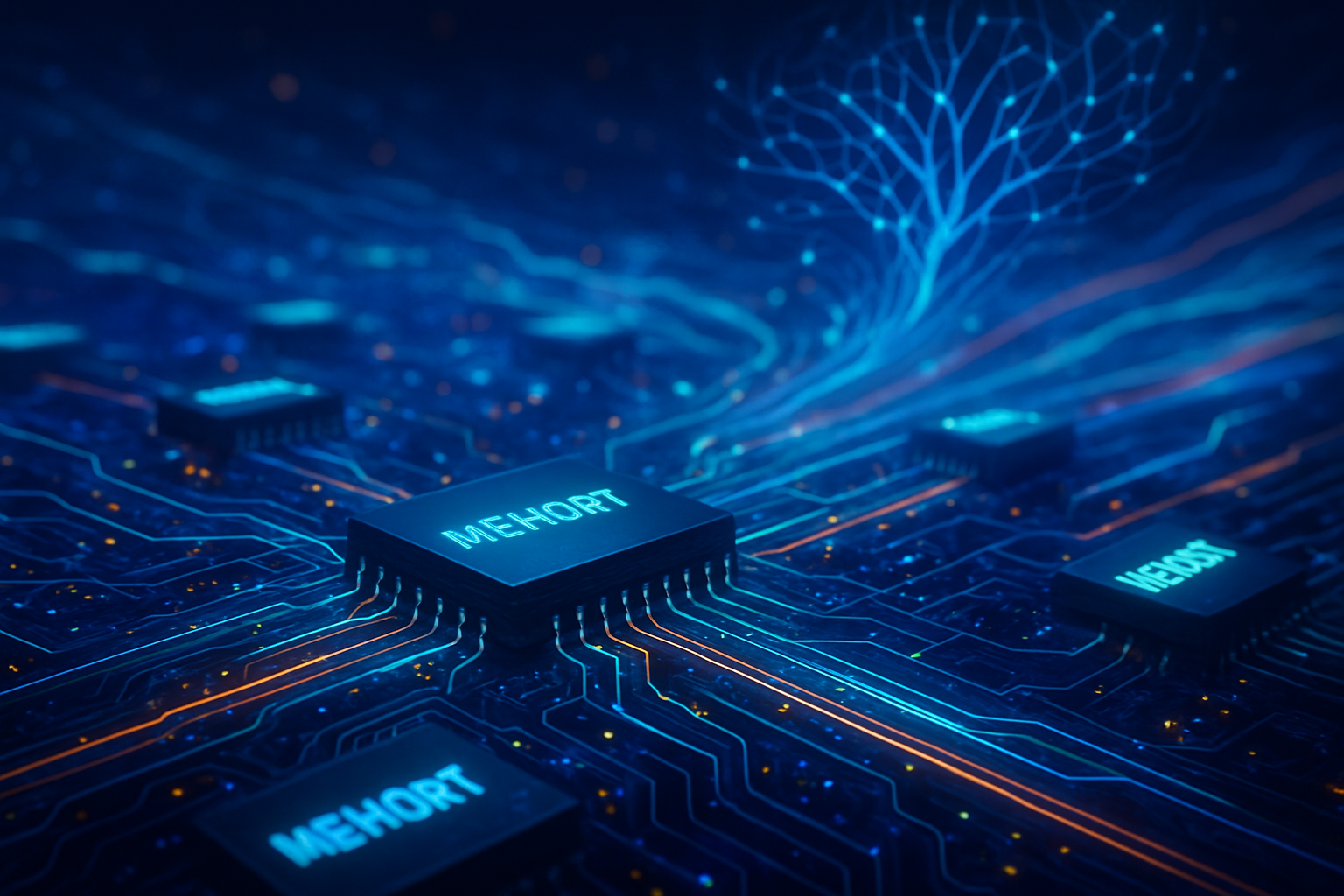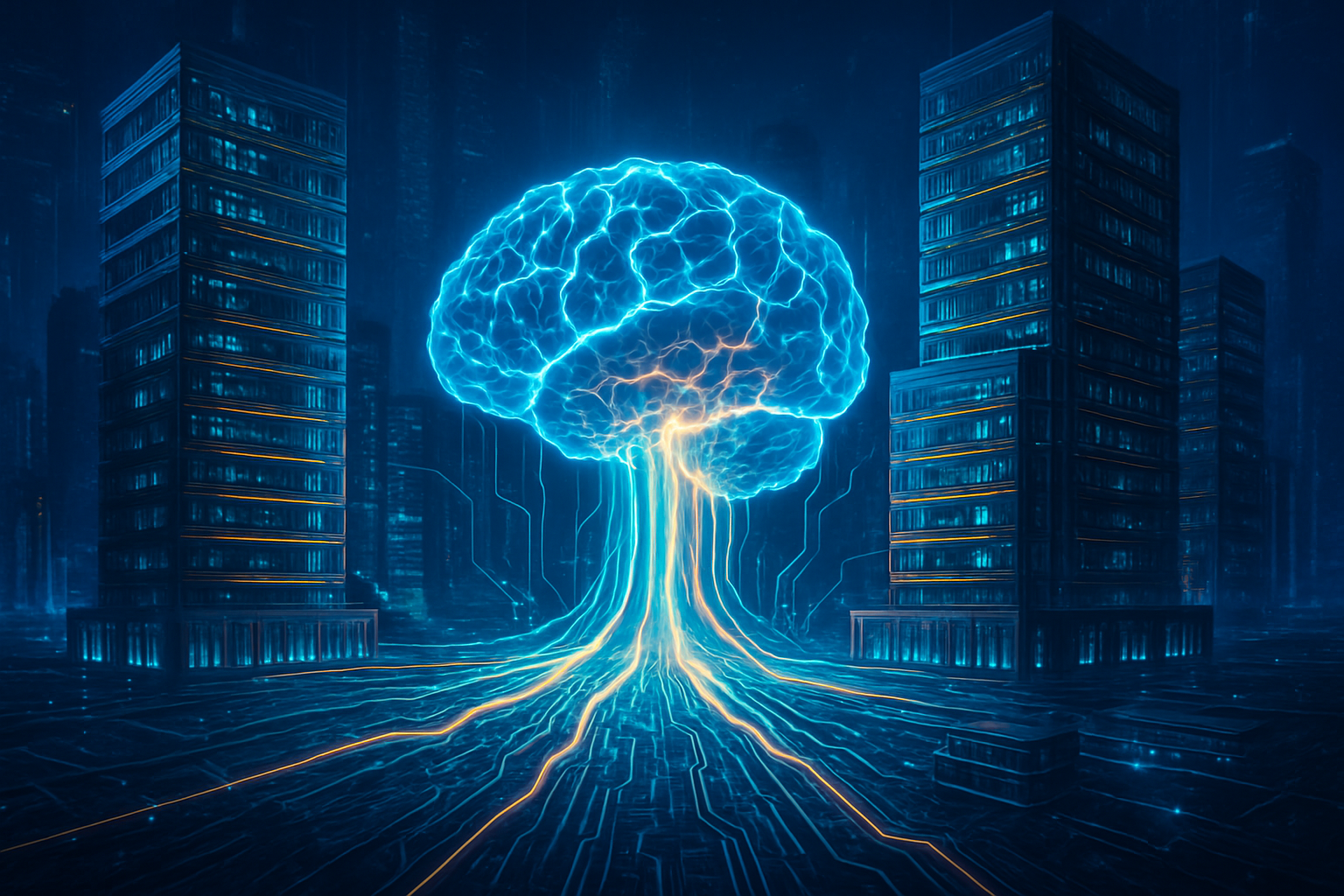Micron Technology (NASDAQ: MU) has emerged as an undeniable powerhouse in the semiconductor industry, propelled by the insatiable global demand for high-bandwidth memory (HBM) – the critical fuel for the burgeoning artificial intelligence (AI) revolution. The company's recent stellar stock performance and escalating market capitalization underscore a profound re-evaluation of memory's role, transforming it from a cyclical commodity to a strategic imperative in the AI era. As of November 2025, Micron's market cap hovers around $245 billion, cementing its position as a key market mover and a bellwether for the future of AI infrastructure.
This remarkable ascent is not merely a market anomaly but a direct reflection of Micron's strategic foresight and technological prowess in delivering the high-performance, energy-efficient memory solutions that underpin modern AI. With its HBM3e chips now powering the most advanced AI accelerators from industry giants, Micron is not just participating in the AI supercycle; it is actively enabling the computational leaps that define it, driving unprecedented growth and reshaping the competitive landscape of the global tech industry.
The Technical Backbone of AI: Micron's Memory Innovations
Micron Technology's deep technical expertise in memory solutions, spanning DRAM, High Bandwidth Memory (HBM), and NAND, forms the essential backbone for today's most demanding AI and high-performance computing (HPC) workloads. These technologies are meticulously engineered for unprecedented bandwidth, low latency, expansive capacity, and superior power efficiency, setting them apart from previous generations and competitive offerings.
At the forefront is Micron's HBM, a critical component for AI training and inference. Its HBM3E, for instance, delivers industry-leading performance with bandwidth exceeding 1.2 TB/s and pin speeds greater than 9.2 Gbps. Available in 8-high stacks with 24GB capacity and 12-high stacks with 36GB capacity, the 8-high cube offers 50% more memory capacity per stack. Crucially, Micron's HBM3E boasts 30% lower power consumption than competitors, a vital differentiator for managing the immense energy and thermal challenges of AI data centers. This efficiency is achieved through advanced CMOS innovations, Micron's 1β process technology, and advanced packaging techniques. The company is also actively sampling HBM4, promising even greater bandwidth (over 2.0 TB/s per stack) and a 20% improvement in power efficiency, with plans for a customizable base die for enhanced caches and specialized AI/HPC interfaces.
Beyond HBM, Micron's LPDDR5X, built on the world's first 1γ (1-gamma) process node, achieves data rates up to 10.7 Gbps with up to 20% power savings. This low-power, high-speed DRAM is indispensable for AI at the edge, accelerating on-device AI applications in mobile phones and autonomous vehicles. The use of Extreme Ultraviolet (EUV) lithography in the 1γ node enables denser bitline and wordline spacing, crucial for high-speed I/O within strict power budgets. For data centers, Micron's DDR5 MRDIMMs offer up to a 39% increase in effective memory bandwidth and 40% lower latency, while CXL (Compute Express Link) memory expansion modules provide a flexible way to pool and disaggregate memory, boosting read-only bandwidth by 24% and mixed read/write bandwidth by up to 39% across HPC and AI workloads.
In the realm of storage, Micron's advanced NAND flash, particularly its 232-layer 3D NAND (G8 NAND) and 9th Generation (G9) TLC NAND, provides the foundational capacity for the colossal datasets that AI models consume. The G8 NAND offers over 45% higher bit density and the industry's fastest NAND I/O speed of 2.4 GB/s, while the G9 TLC NAND boasts an industry-leading transfer speed of 3.6 GB/s and is integrated into Micron's PCIe Gen6 NVMe SSDs, delivering up to 28 GB/s sequential read speeds. These advancements are critical for data ingestion, persistent storage, and rapid data access in AI training and retrieval-augmented generation (RAG) pipelines, ensuring seamless data flow throughout the AI lifecycle.
Reshaping the AI Ecosystem: Beneficiaries and Competitive Dynamics
Micron Technology's advanced memory solutions are not just components; they are enablers, profoundly impacting the strategic positioning and competitive dynamics of AI companies, tech giants, and innovative startups across the globe. The demand for Micron's high-performance memory is directly fueling the ambitions of the most prominent players in the AI race.
Foremost among the beneficiaries are leading AI chip developers and hyperscale cloud providers. NVIDIA (NASDAQ: NVDA), a dominant force in AI accelerators, relies heavily on Micron's HBM3E chips for its next-generation Blackwell Ultra, H100, H800, and H200 Tensor Core GPUs. This symbiotic relationship is crucial for NVIDIA's projected $150 billion in AI chip sales in 2025. Similarly, AMD (NASDAQ: AMD) is integrating Micron's HBM3E into its upcoming Instinct MI350 Series GPUs, targeting large AI model training and HPC. Hyperscale cloud providers like Microsoft (NASDAQ: MSFT), Google (NASDAQ: GOOGL), and Amazon (NASDAQ: AMZN) are significant consumers of Micron's memory and storage, utilizing them to scale their AI capabilities, manage distributed AI architectures, and optimize energy consumption in their vast data centers, even as they develop their own custom AI chips. Major AI labs, including OpenAI, also require "tons of compute, tons of memory" for their cutting-edge AI infrastructure, making them key customers.
The competitive landscape within the memory sector has intensified dramatically, with Micron positioned as a leading contender in the high-stakes HBM market, alongside SK Hynix (KRX: 000660) and Samsung (KRX: 005930). Micron's HBM3E's 30% lower power consumption offers a significant competitive advantage, translating into substantial operational cost savings and more sustainable AI data centers for its customers. As the only major U.S.-based memory manufacturer, Micron also enjoys a unique strategic advantage in terms of supply chain resilience and geopolitical considerations. However, the aggressive ramp-up in HBM production by competitors could lead to a potential oversupply by 2027, potentially impacting pricing. Furthermore, reported delays in Micron's HBM4 could temporarily cede an advantage to its rivals in the next generation of HBM.
The impact extends beyond the data center. Smartphone manufacturers leverage Micron's LPDDR5X for on-device AI, enabling faster experiences and longer battery life for AI-powered features. The automotive industry utilizes LPDDR5X and GDDR6 for advanced driver-assistance systems (ADAS), while the gaming sector benefits from GDDR6X and GDDR7 for immersive, AI-enhanced gameplay. Micron's strategic reorganization into customer-focused business units—Cloud Memory Business Unit (CMBU), Core Data Center Business Unit (CDBU), Mobile and Client Business Unit (MCBU), and Automotive and Embedded Business Unit (AEBU)—further solidifies its market positioning, ensuring tailored solutions for each segment of the AI ecosystem. With its entire 2025 HBM production capacity sold out and bookings extending into 2026, Micron has secured robust demand, driving significant revenue growth and expanding profit margins.
Wider Significance: Micron's Role in the AI Landscape
Micron Technology's pivotal role in the AI landscape transcends mere component supply; it represents a fundamental re-architecture of how AI systems are built and operated. The company's continuous innovations in memory and storage are not just keeping pace with AI's demands but are actively shaping its trajectory, addressing critical bottlenecks and enabling capabilities previously thought impossible.
This era marks a profound shift where memory has transitioned from a commoditized product to a strategic asset. In previous technology cycles, memory was often a secondary consideration, but the AI revolution has elevated advanced memory, particularly HBM, to a critical determinant of AI performance and innovation. We are witnessing an "AI supercycle," a period of structural and persistent demand for specialized memory infrastructure, distinct from prior boom-and-bust patterns. Micron's advancements in HBM, LPDDR, GDDR, and advanced NAND are directly enabling faster training and inference for AI models, supporting larger models and datasets with billions of parameters, and enhancing multi-GPU and distributed computing architectures. The focus on energy efficiency in technologies like HBM3E and 1-gamma DRAM is also crucial for mitigating the substantial energy demands of AI data centers, contributing to more sustainable and cost-effective AI operations.
Moreover, Micron's solutions are vital for the burgeoning field of edge AI, facilitating real-time processing and decision-making on devices like autonomous vehicles and smartphones, thereby reducing reliance on cloud infrastructure and enhancing privacy. This expansion of AI from centralized cloud data centers to the intelligent edge is a key trend, and Micron is a crucial enabler of this distributed AI model.
Despite its strong position, Micron faces inherent challenges. Intense competition from rivals like SK Hynix and Samsung in the HBM market could lead to pricing pressures. The "memory wall" remains a persistent bottleneck, where the speed of processing often outpaces memory delivery, limiting AI performance. Balancing performance with power efficiency is an ongoing challenge, as is the complexity and risk associated with developing entirely new memory technologies. Furthermore, the rapid evolution of AI makes it difficult to predict future needs, and geopolitical factors, such as regulations mandating domestic AI chips, could impact market access. Nevertheless, Micron's commitment to technological leadership and its strategic investments position it as a foundational player in overcoming these challenges and continuing to drive AI advancement.
The Horizon: Future Developments and Expert Predictions
Looking ahead, Micron Technology is poised for continued significant developments in the AI and semiconductor landscape, with a clear roadmap for advancing HBM, CXL, and process node technologies. These innovations are critical for sustaining the momentum of the AI supercycle and addressing the ever-growing demands of future AI workloads.
In the near term (late 2024 – 2026), Micron is aggressively scaling its HBM3E production, with its 24GB 8-High solution already integrated into NVIDIA (NASDAQ: NVDA) H200 Tensor Core GPUs. The company is also sampling its 36GB 12-High HBM3E, promising superior performance and energy efficiency. Micron aims to significantly increase its HBM market share to 20-25% by 2026, supported by capacity expansion, including a new HBM packaging facility in Singapore by 2026. Simultaneously, Micron's CZ120 CXL memory expansion modules are in sample availability, designed to provide flexible memory scaling for various workloads. In DRAM, the 1-gamma (1γ) node, utilizing EUV lithography, is being sampled, offering speed increases and lower power consumption. For NAND, volume production of 232-layer 3D NAND (G8) and G9 TLC NAND continues to drive performance and density.
Longer term (2027 and beyond), Micron's HBM roadmap includes HBM4, projected for mass production in 2025, offering a 40% increase in bandwidth and 70% reduction in power consumption compared to HBM3E. HBM4E is anticipated by 2028, targeting 48GB to 64GB stack capacities and over 2 TB/s bandwidth, followed by HBM5 (2029) and HBM6 (2032) with even more ambitious bandwidth targets. CXL 3.0/3.1 will be crucial for memory pooling and disaggregation, enabling dynamic memory access for CPUs and GPUs in complex AI/HPC workloads. Micron's DRAM roadmap extends to the 1-delta (1δ) node, potentially skipping the 8th-generation 10nm process for a direct leap to a 9nm DRAM node. In NAND, the company envisions 500+ layer 3D NAND for even greater storage density.
These advancements will unlock a wide array of potential applications: HBM for next-generation LLM training and AI accelerators, CXL for optimizing data center performance and TCO, and low-power DRAM for enabling sophisticated AI on edge devices like AI PCs, smartphones, AR/VR headsets, and autonomous vehicles. However, challenges persist, including intensifying competition, technological hurdles (e.g., reported HBM4 yield challenges), and the need for scalable and resilient supply chains. Experts remain overwhelmingly bullish, predicting Micron's fiscal 2025 earnings to surge by nearly 1000%, driven by the AI-driven supercycle. The HBM market is projected to expand from $4 billion in 2023 to over $25 billion by 2025, potentially exceeding $100 billion by 2030, directly fueling Micron's sustained growth and profitability.
A New Era: Micron's Enduring Impact on AI
Micron Technology's journey as a key market cap stock mover is intrinsically linked to its foundational role in powering the artificial intelligence revolution. The company's strategic investments, relentless innovation, and leadership in high-bandwidth, low-power, and high-capacity memory solutions have firmly established it as an indispensable enabler of modern AI.
The key takeaway is clear: advanced memory is no longer a peripheral component but a central strategic asset in the AI era. Micron's HBM solutions, in particular, are facilitating the "computational leaps" required for cutting-edge AI acceleration, from training massive language models to enabling real-time inference at the edge. This period of intense AI-driven demand and technological innovation is fundamentally re-architecting the global technology landscape, with Micron at its epicenter.
The long-term impact of Micron's contributions is expected to be profound and enduring. The AI supercycle promises a new paradigm of more stable pricing and higher margins for leading memory manufacturers, positioning Micron for sustained growth well into the next decade. Its strategic focus on HBM and next-generation technologies like HBM4, coupled with investments in energy-efficient solutions and advanced packaging, are crucial for maintaining its leadership and supporting the ever-increasing computational demands of AI while prioritizing sustainability.
In the coming weeks and months, industry observers and investors should closely watch Micron's upcoming fiscal first-quarter results, anticipated around December 17, for further insights into its performance and outlook. Continued strong demand for AI-fueled memory into 2026 will be a critical indicator of the supercycle's longevity. Progress in HBM4 development and adoption, alongside the competitive landscape dominated by Samsung (KRX: 005930) and SK Hynix (KRX: 000660), will shape market dynamics. Additionally, overall pricing trends for standard DRAM and NAND will provide a broader view of the memory market's health. While the fundamentals are strong, the rapid climb in Micron's stock suggests potential for short-term volatility, and careful assessment of growth potential versus current valuation will be essential. Micron is not just riding the AI wave; it is helping to generate its immense power.
This content is intended for informational purposes only and represents analysis of current AI developments.
TokenRing AI delivers enterprise-grade solutions for multi-agent AI workflow orchestration, AI-powered development tools, and seamless remote collaboration platforms.
For more information, visit https://www.tokenring.ai/.




